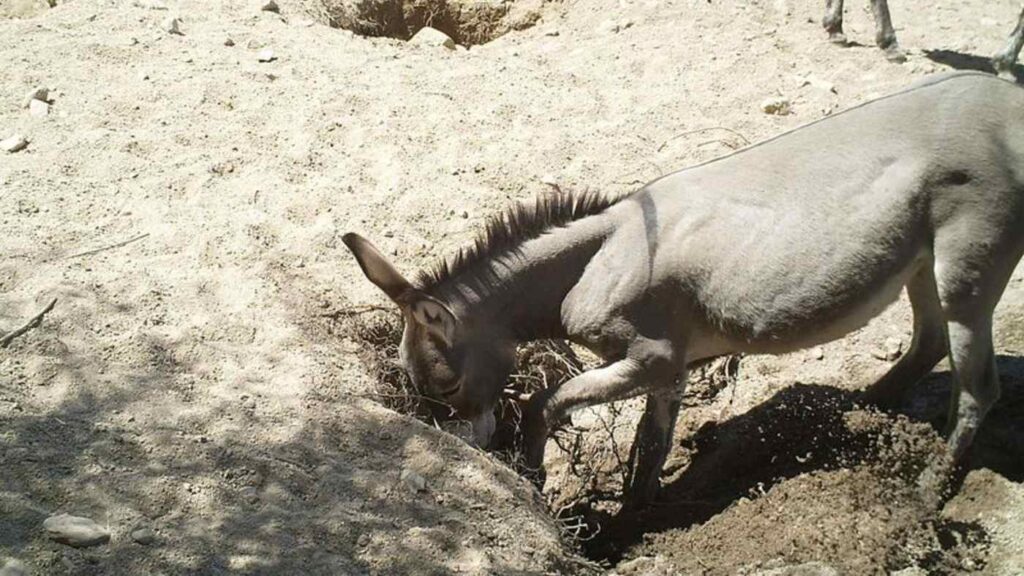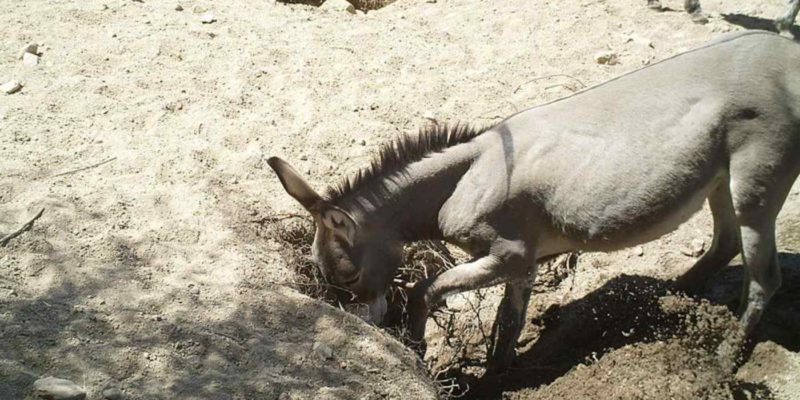Researchers Find That Wild Donkeys and Horses Dig Desert Watering Holes Vital For Entire Ecosystem

Research on wild horses and wild donkeys in the southwestern United States shows that they dig wells in the desert with their hooves in the soft sand of river beds, thus creating a network of additional freshwater sources for the native creatures of the area.
This find has altered the prevailing wisdom that wild equids, which were introduced by the Spanish, are pests that must be eliminated, as the scientist behind the research suggests they could be fulfilling a vital role once performed by now-extinct mammals. from the Pleistocene.
In modern conservation, if an animal appears where it did not live a few hundred years ago and thrives there, it is generally considered invasive. Invasive species are almost always seen as a threat, with animals such as foxes, cats, goats, mice, sheep, pigs, cane toads, rats, carp, and others terrorizing delicate ecosystems in Madagascar, Galapagos, and Australia, to name a few examples. . .
The ecosystems of the Sonoran and Mojave desert currently house 95,000 wild horses and donkeys, which are considered invasive pests that compete with other native herbivores and suppress or trample native plants.
Conservation doctrine would say they should be exterminated or removed, but it is sometimes more complex than that, and Erick Lundgren of the University of Aarhus in Denmark has shown that the eagerness of desert fauna to drink from these equine wells must be considered. before making any decisions about the future of the species.
Lundgren found that 59 different species frequented the water wells and that the species diversity around them was 64% higher than the average square mile of the ecosystem.
Landscape Engineers
“Equid wells strongly reduced the isolation of water features, reducing the average nearest neighbor distances between water features by an average of 65%, and at most 99%,” wrote Lundgren and his co-authors in the article that published in Sciences.
By monitoring four different sites in the Sonoran and Mojave deserts, and sampling more than 3,258 trap nights between 2015 and 2017, Lundgren found bobcats, wild boars, mule deer, bush jays and 55 other vertebrates enjoying a drink.
“There was a cacophony of organisms,” he said. New scientist.
Digging for water is a common behavior among large mammals around the world, and in Africa, elephant water holes are a gift to surrounding species. Certain animals, such as the elephant, beaver, and bison, are called “ecosystem engineers” because they shape their environment so dramatically that the flora and fauna in it depend on and await their impact, and have adapted to accommodate it. or exploit it.
In his article, Lundgren posits that American wild equids should be classified as ecosystem engineers.
MORE: Farms in the UK saved this beautiful Duke of Burgundy butterfly from extinction
“By changing the abiotic environment around them, certain organisms can greatly facilitate other species and processes,” Lundgren said in a recent interview with Sciences. “The most notable aspect of deserts is the scarcity of water, and these animals can really improve their availability during drought and hot summers, where natural sources of water tend to dry up.”
A role to play
Questions such as whether the presence of wild equids has changed the landscape in a positive way, what constitutes truly invasive and how far back it is measured, and whether our role is to constantly try to preserve what exists now, understanding that 99% of all species have. extinct, and that the history of the Earth has undergone constant changes, are common in the conservation of mammals.
RELATED: The oldest known wild bird in the world, called Wisdom, hatches another young at 70 years (SEE)
On another of Lundgren’s papers, the author notes that since the Pleistocene, a wide variety of global megafauna have become extinct in many different types of ecosystems. The services, or engineering of those species performed in the landscape for the benefit of many animals and plants that still exist today, are largely a mystery.
However, in number, the introduced megafauna has restored about 15% of the estimated Pleistocene megafauna populations worldwide.
Nowhere is this perhaps more different than in North America, which had not only prehistoric mastodon-shaped pachyderms, but also hyenas, swift cougars, the largest bear of all time, and, interestingly, several species of wild horses.
“Recent and ancient extinctions and range contractions of megafauna, and the loss of their distinctive ecological functions, have led to highly modified modern landscapes,” he writes. “Although the introduced megafauna have been studied primarily as a threat to conservation objectives, growing evidence suggests that they present a countercurrent to old losses and may replace lost ecological functions.”
CHECK: Take a look at this interactive map that shows all of the conservation lands near you in the US.
Could the desert animals observed in Lundgren’s study be reacting to a role that the ancestors of these modern donkeys and horses played in the landscape tens of thousands of years ago? It is a thought-provoking question that Smithsonian The details have affected the community in different ways, with some choosing to stay with current doctrine and others reconsidering the pest status of wild American equids.
SHARE this story with friends thirsty for good news …








